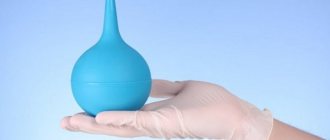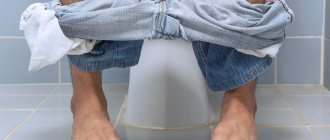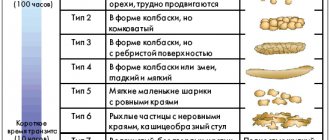The release and cleansing of the human body from harmful toxins, harmful toxins and other unhealthy components can be done in several ways. An enema is considered one of the effective and efficient options. Using medium or deep intestinal lavage by introducing a special water composition through the rectum, you can reliably get rid of harmful elements that interfere with maintaining the health of the body. An enema is also a reliable first aid remedy for poisoning and allergies (consultation with a doctor is required). But to use this method, it is important to be able to do an enema yourself. Even though this is a very simple process, there is a lot to learn. After all, the procedure should not cause discomfort or pain. It is important to get the maximum benefit from this manipulation for the body. Therefore, it is worth paying attention to the following few tips and recommendations.
Types of enemas and their purposes
There are many types of enemas, each of which has its own purpose.
These include:
| Type of enema | Purpose |
| Cleansing | With its help, the intestines are cleansed of toxins and feces during constipation. It is also placed before an x-ray examination. |
| Oily | This procedure is carried out in order to soften the stool and facilitate bowel movements during constipation. To do this, use heated olive, sunflower or vaseline oil. |
| Medical | This enema is done if it is impossible to administer the drug orally. It is quickly absorbed and enters the bloodstream. In this case, a positive effect is exerted directly on the intestines or on the entire human body. |
| Hypertensive | It is indicated for cleansing the intestines for constipation. With its help, feces are quickly removed from the body. In this case, use sodium chloride (10%) or magnesia (30%) |
Compound
An enema at home is most often performed using warm distilled water. However, for certain problems, solutions can be with oils, herbs, disinfectants:
- Oily. It contains different oils: castor, sea buckthorn, olive, linseed. Such enemas help with inflammatory processes in the abdominal organs, ulcers, hemorrhoids, relieve constipation, parasites, bacteria, and worms.
- Saline. It uses table or sea salt. Sometimes this enema is done with lemon. It helps to cleanse the intestines well.
- With potassium permanganate. Potassium permanganate has a disinfecting effect.
- Soda. Thanks to soda, water balance is normalized, gas formation is eliminated, weight is reduced, and parasites are eliminated.
- Lemon. A lemon enema helps normalize metabolism, maintains beneficial microflora in the intestines, makes stool softer, and eliminates waste and toxins.
- Beetroot. In this case, freshly squeezed beet juice is used. This procedure has a powerful laxative effect.
In any case, the approach to choosing an enema solution should be individual.
Purgation
The benefit of cleansing enemas is that they quickly flush out all accumulated toxins from the intestines, improve the absorption of nutrients and normalize the functions of the gastrointestinal tract. With the help of enemas, you can not only cleanse the large intestine yourself, but also improve the general condition of your body.
Enema cleansing is performed only for the large intestine. For the small intestine, this procedure is not necessary, since the rate of contraction of the walls of the small intestine (peristalsis) is much higher than that of the large intestine. Due to slow peristalsis of the colon, the movement of the food bolus worsens, and some of the digestive products settle on the intestinal walls. The elimination of digestive products slows down, which becomes a source of toxins.
Poisoning with toxins causes a person to feel unwell; a colon clogged with waste and toxins can cause various diseases. It is recommended to periodically cleanse the intestines. This is especially true for those who move little and consume a lot of flour, protein, fried, and smoked foods.
Products that contain yeast are especially harmful to the gastrointestinal tract: fresh yeast baked goods and all kinds of confectionery products. Such products, passing through the large intestine, leave a film of feces on the walls. Over time, this film becomes thicker, fecal stones appear, and the process of rotting begins.
Fecal stones never come out naturally; all wastes and toxins slowly decompose and poison the body.
After a course of cleansing enemas, fecal stones are exfoliated and removed from the colon. By giving yourself a therapeutic course of intestinal cleansing, a person can lose up to several kilograms of weight, overall health improves, and chronic fatigue disappears. Sometimes it happens that a patient suffering from some disease recovers without additional treatment after cleansing enemas.
Preparation
Regardless of the purpose for which the intestines are cleansed, it is necessary to properly prepare for the procedure. The day before it is carried out, you should switch to a fruit and vegetable diet, completely eliminating smoked, spicy, sweet and fatty foods from your diet. You need to drink about 2 liters of water per day.
At the pharmacy you need to purchase a special device - an Esmarch mug, which is a 2-liter container. It is completed with a rubber hose, a clamp and three tips. Sometimes the procedure is carried out using a rubber bulb. The tips are doused with boiling water.
Water for an enema performed at home is taken at different temperatures:
- cold (0...+18 degrees) – helps lower body temperature and activate intestinal motility;
- warm (+37...+40 degrees) – relaxes the smooth muscles of the intestines, liquefies hardened feces;
- hot (+40...+45 degrees) - necessary to stimulate intestinal motility so that feces are quickly released, as well as to warm the prostate.
Precautionary measures
You can't use an enema every time you want. After all, the body can get used to such outside help and refuse to empty itself.
There are also some medical conditions in which you should refuse an enema:
- intestinal bleeding;
- haemorrhoids;
- oncological diseases of the intestine;
- rectal fissures;
- intestinal ulcers.
Before you give yourself an enema, you should definitely consult with your doctor about its advisability. It is better to buy Esmarch's mug and syringe in pharmacies, and not on the Internet. Trust only trusted manufacturers and remember your health is in your hands.
Carrying out the procedure
A cleansing enema at home is carried out using various devices.
This could be an Esmarch mug, a rubber bulb, or microenemas.
Esmarch's mug
For this procedure you will need 1–2 liters of water heated to +37 degrees. You can add 1 tbsp to it. l. ordinary baby soap or 2 tbsp. l. vegetable oil. This helps enhance the effect of the enema. Prepared water is poured into Esmarch's cup and the rubber tube located there is filled. All the air must come out of it, so open the tap for a while.
The bed is covered with oilcloth, one end of which is lowered into a prepared bucket or basin. The person lies on his left side, bending his legs and pressing them to his stomach. The tip is lubricated with Vaseline oil and carefully inserted into the anus and rectum to a depth of 10–12 cm.
Open the tap and slowly raise Esmarch's mug to a height of about 1 m. If a person feels pain or a strong urge to defecate, then reduce the water pressure. When the liquid is completely introduced, the tip is removed. The patient should refrain from bowel movements for 5–10 minutes. Stimulating the peristalsis of the colon leads to its emptying of feces. The tips are washed with warm water and soap and boiled.
Pear
An enema can be given using a bulb. It is convenient if you need to introduce liquid with a volume of no more than 0.5 liters. Before the procedure, the pear is washed in a soapy solution. The bed or sofa is covered with oilcloth. The solution is filled into the bulb. To do this, remove all the air from it, lower the tip into a container with liquid and absorb the required amount of water.
If you have to do the enema yourself, you should lie on your side with your legs pressed to your stomach. Lubricate the anus and the tip of the bulb with Vaseline oil, spread the buttocks with your fingers and carefully insert the syringe into the rectum 3 cm. You need to squeeze the bulb a little while introducing liquid into the intestines. After this it is removed. The solution should be kept for 10 minutes, then you need to go to the toilet.
Without pear
If you urgently need to cleanse your intestines, but you don’t have a pear or an Esmarch mug at hand, you can use a homemade design.
To make it, you will need the following materials:
- plastic bottle with cap;
- silicone tube;
- ballpoint pen body;
- clothes pin.
The silicone tube is connected to a cap, in which a hole is made of a smaller diameter than the tube itself. Pour liquid into the container and screw on the lid. The body of the handle without bulges or defects is attached to the other end of the tube. It is lubricated with Vaseline oil and carefully inserted into the rectum. A clothespin on the tube is necessary to regulate the flow of solution.
Microclyster
Microenema Microlax is a fast-acting laxative, which is produced in tubes. It contains the necessary dose of the drug, which helps soften dense stool, making it easy to remove. Both adults and children can use it.
The microenema has a flexible applicator tip with rounded edges. To insert it, break off the seal, lubricate it with Vaseline oil and lightly press the tube, releasing the air. Then it is inserted into the anus and the contents are completely squeezed out. The microenema begins to act in 5–15 minutes.
Walker's cleanse
To cleanse the intestines according to Walker, you will need 2-3 liters of boiled water, to which add 1-2 tbsp. l. lemon juice or apple cider vinegar. The liquid is poured into Esmarch's mug. The person lies on his side and presses his legs to his stomach. The tip is inserted very carefully into the rectum and the tap is opened so that water begins to flow.
Take 7 deep breaths and the same number of short exhalations. This allows fluid to be introduced into the rectum more quickly. When the mug is empty, carefully remove the tip. Water should be retained for 7 minutes, after which the intestines are emptied. This procedure is recommended to be carried out early in the morning.
Purified water
The main purpose of an enema as a medical procedure is to cleanse the intestines:
- as efficient as possible;
- forced.
Most often, an organ needs cleansing in cases where it cannot naturally remove the following that have accumulated in it:
- feces;
- gases.
Most often, enemas with clean water of different temperatures are prescribed for people suffering from constipation. Of course, the decision to perform an enema is made according to research conducted by doctors. In addition, the following are required to undergo colon cleansing:
- pregnant women, as one of the parts of the preparatory process before childbirth;
- patients who require elective surgery.
A colon lavage solution can be made from plain water at different temperatures.
Let's consider some features associated with the procedure and preparation of the solution.
Point No. 1. To wash the intestines of an adult, you will need about two liters of clean water.
Point No. 2. To maintain intestinal peristalsis (contraction of muscle tissue) in its original state, the temperature of the water introduced into the intestines should feel warm or lukewarm. Typically, at the start of the procedure, the temperature in degrees is:
- from 25 units;
- up to 35.
Point No. 3. If the indication for the procedure is a decrease in intestinal motility, resulting in hypotonic or atonic constipation, the degree is lowered, and a liquid is introduced into the intestine, the temperature of which is about 20 units on the Celsius scale.
Point No. 4. If disturbances associated with peristalsis of a spastic nature occur, it is necessary, on the contrary, to increase the temperature, making the water hot, of course, not scalding, because it is necessary to heal the intestines, and not damage it further. In such a situation, the range in degrees can be as follows:
- from 35 scale units;
- up to 42.
However, there is one caveat. People without medical education have no way to independently distinguish intestinal spasm from atony (loss of tone and critical decrease in motor skills). Therefore, without receiving specific instructions from the attending physician, it is not advisable to carry out the procedure and determine the desired solution temperature.
Diagnosis of intestinal atony
Point No. 5. Traditional water enemas are also used when there are no other ways to reduce the patient’s severe hyperthermia; in this case, the liquid should also have a low temperature. At the same time, there is also a decrease in the volume of the injected product: in total, about one hundred milliliters will be needed. The effect of such an enema is very effective due to the fact that the blood circulating through the venous plexus of the rectum is cooled in a contact manner.
A small enema will be required to reduce hyperthermia.
Frequent use of this method of lowering body temperature, however, is not recommended, since it is quite possible that complications of inflammatory etiology may manifest themselves. The total number of enemas for hyperthermia should be two or three, with:
- the temperature of the injected liquid is 15 degrees;
- intestinal lavage is combined with other methods of cooling the body that have a physical orientation (covering with ice, for example).
Contraindications
It is strictly forbidden to do an enema if there are intestinal polyps. These are small benign tumors that arise on the intestinal wall from its tissue. They begin to grow into the intestinal lumen, and an enema can damage them, which can lead to bleeding and other unpleasant consequences.
It is not recommended to douche if you have previously experienced allergic reactions to the components of the solution. Even a small amount of the substance, once on the mucous membrane, can provoke Quincke's edema or anaphylactic shock.
This procedure is extremely painful if there are anal fissures. During an enema, an infection can occur, which leads to a new problem. The cleansing procedure for rectal prolapse is also prohibited, as it is injured, which can cause death.
Enema for hemorrhoids and weight loss
For hemorrhoids, oil and water enemas are performed to facilitate bowel movements. The oil has a laxative effect and makes the intestinal walls soft. The procedure is carried out in the same way as in other cases, but it is strictly prohibited if the following conditions are observed:
- acute inflammation;
- thrombosis of hemorrhoids;
- rectal prolapse;
- anal fissures and bleeding.
Enemas are also intended for weight loss. They help by further cleansing the intestines when a person has decided to eat right or fast.
Saline
Saline solution, just like hypertonic solution, is sold in pharmacies. In fact, these liquids consist of the same substances, however, they differ in percentage.
Saline
The use of saline solution is usually done in cases where it is necessary to cleanse the intestines of young children whose age has not reached a full year.
The amount of liquid is calculated as follows: 10 milliliters for each month the child lives.
Features of the procedure for different people
An enema can be done by everyone, regardless of gender and age.
But for different categories of people, the procedure for cleansing the intestines is different.
In men and women
Enemas are given to men and women in exactly the same way, but the individual characteristics of the body should be taken into account. Women are not recommended to cleanse their bowels a week before or for 7 days after their period.
For men, an enema helps treat prostatitis. To do this, first cleanse the intestines with plain water, and then inject an oil or herbal solution into the rectum and keep it for an hour.
In pregnant women
Constipation often occurs during pregnancy. If you cannot do without an enema, then it should be done with the utmost caution. In the first trimester, if there is increased tone of the uterus, this procedure can provoke its contraction and miscarriage. In the later stages, an enema can cause premature birth.
There are many medications that have a mild laxative effect and are allowed during pregnancy, for example, Microlax microenemas.
In newborns
Newborns are given enemas in the following cases:
- to ease bowel movements during constipation;
- in case of poisoning.
A rubber bulb is used for the procedure. The child is placed on his back, his legs are raised and the tip of a syringe, lubricated with Vaseline, is inserted into the anus 2-3 cm. The bulb is slowly squeezed until all the water enters the intestines. The buttocks are squeezed and held for a while, after which they are relaxed.











